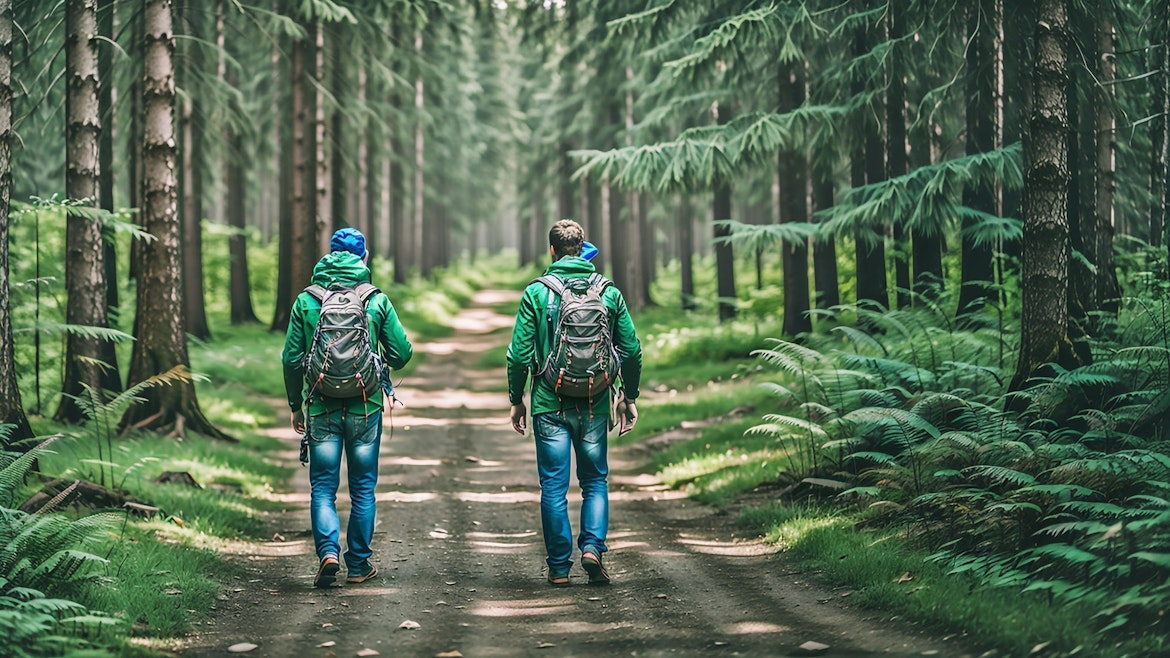The worst-case scenario in a survival situation is bugging out on foot with what you can carry on your back. Preparing a bug-out bag is a common process for preppers just in case we have to make a run for it in a dire situation. While plan A would be to shelter in place and plan B would be to have a vehicle set-up, plan C is the pack stuffed with survival necessities.
The planning of a BOB should be a well thought out process with information and ideas gathered from many sources. One source that should be seriously considered in backpacking. Camping is still camping, one turns up at a wonderful place in the wilderness, sets up camp, and enjoys the scenery and solitude. Backpackers, on the other hand, carry all their gear on their backs and move over land from a starting point to a finish to see more over the course of their trip.
There is a lot that can be learned from backpackers that will come in handy when planning a BOB. The backpacking industry and the people who sling a pack on their backs are nothing if not innovative. Over the years companies have developed gear using modern materials that are both lightweight and strong, much more so than the gear our fathers and grandfathers had. There are also interesting skill sets that backpackers use that are relevant for us. Let’s take a quick look at some.
Leave No Trace
There is an ethic among many backpackers to “Leave No Trace” on the land that they travel. To many, this may sound a little new age, but it has real-world survival implications. If a person has to leave one place and move to another for safety, there is a chance that they are under threat and being tracked. Getting into the habit of following the “Leave No Trace” ethic leaves fewer clues to where they are going.
Light and Ultra-light Weight
Distance backpackers, especially thru-hikers, want to carry as little weight as possible. The industry has responded with gear that is lighter and stronger than ever before using materials such as Titanium, Dyneema, and carbon fiber. This kind of gear has been a boon for backpackers and can be for preppers as well. The drawback is the expense that comes with it, but if you want the best, you have to pay for it.
Clothing
Some of these innovations have been about making clothing both warm and light. New shell materials, new insulation fills, and acrylic fleece have replaced heavier clothing from the past. Wool, especially Merino wool, is woven in such a way that it is not scratchy and uncomfortable against the skin. These modern innovations will give users a lot of choices.
Food and Water
This is an area of great innovation. Freeze-dried foods have been with us for years, but today you can make your own. It’s expensive, but home freeze-dryers are available to one and all. My friends at Swartz Foods built a business around these devices and they are producing some of the best I have had. There is also retort packaging, such as is used in MREs, and it is being used commercially for quality foods that do not require water to prepare them and are lighter than canned foods.

Boiling and various tablets were once the way to purify water, then came filters. Over the years filters have gotten more effective and less expensive. Hollow fiber membranes are less expensive to manufacture so there is a series of filters based on them that give everyone access to a way to have clean water.
A new innovation in clean water is portable ozone generators. These are electronic, USB charged devices that generate ozone from oxygen and this ozone kills most biologicals. I have been testing a pen model from Roving Blue that has been excellent. I have used to purify water and I have not had a single issue.
Tips and Tricks
There are too many to really talk about here but check out the plethora of books that will teach many tricks that will make a bug-out safer and more comfortable. One such trick is sprouting in your backpack. A package of Alfalfa or Mung bean seeds, a dedicated wide-mouth bottle and some coffee filters gives you a micro-green garden that you carry with you. A quick search on Amazon will provide you with a long list of books on the subject.
Conclusion
These are just some of the ways that learning from backpackers can improve our survivability. Applying these ideas and using the innovative equipment that has come out of the industry can help you be prepared. It can also be a fun hobby that will improve and increase your skill set.
 The post What Can We Learn from Backpackers About Preparing for a Bug-Out. first appeared on Ready Magazine.
The post What Can We Learn from Backpackers About Preparing for a Bug-Out. first appeared on Ready Magazine.









